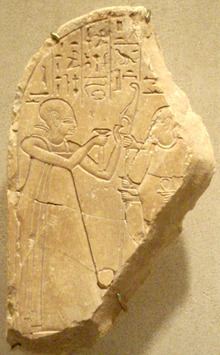Dynasty 19th Dynasty Wife Mutpipu Successor Prehotep I | Father Ptahemakhet | |
 | ||
Children Bakenptah, Inuhayet, Taweretkha'ti, Reset, Henutmeter Pharaohs | ||
Egypt 659 neferronpet s tomb ii t t 178 by egyptahotep
Neferronpet was Vizier and the High Priest of Ptah from the reign of Ramesses II to the reign of Seti II.
Contents
Life
The Berlin genealogy dating to the 22nd/23rd dynasty states that Neferronpet was the son of Ptahemakhet. The Pyramidion from Liverpool names Neferronpet's son the God's Father of Ptah Bakenptah, Neferronpet's wife Mutpipu and four daughters: Inuhayet, Taweretkha'ti, Res(et), and Henutmeter. As Vizier Neferronpet succeeded Khay in office.
Neferronpet is attested on:
He may have been succeeded by Rahotep as both Vizier and High Priest of Ptah.
Death
It was also the practice of wealthy Egyptians to purchase Book of the Dead papyri, according to the commercial Deir el-Medina texts, and they probably looked very similar to the Nineteenth Dynasty fragmentary example of Nefferenpet. A painted papyrus became more widely available to a priest and a scribe like Neferrenpet during the Nineteenth Dynasty. Previously such information was restricted to the royal circle.
Beginning in the New Kingdom, the Egyptians customarily placed in their tombs funerary texts taken from the 'Book of the Dead'. The funerary texts were often incorporated in any way possible. They were etched into tomb walls, inscribed onto papyri and placed in the bandages of the mummy, placed in statues, just to name a few. The 'Book of the Dead' of the sculptor Neferrenpet dates from c. 1250 BC, and "the texts are written in so-called 'cursive hieroglyphs' in vertical columns; they are accompanied by 'vignettes' (illustrations) which emphasize their magical content". These texts were meant to protect the deceased and give them eternal life.
